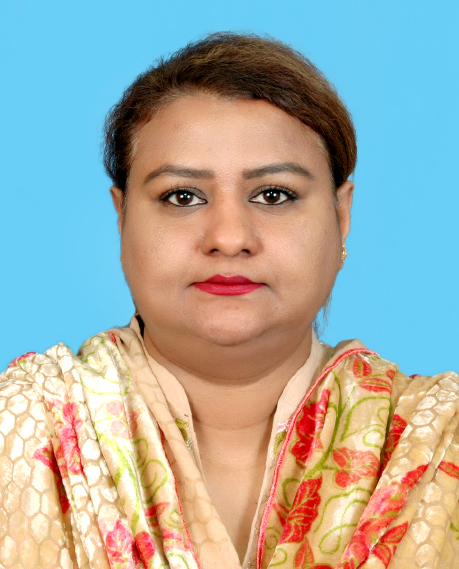Renowned Speakers

Dr. Ebrahim Shokoohi
Professor, North West University of South Africa South Africa

Dr. Ibatsam Khokhar
Assistant professor, Forman Christian College Pakistan

Dr. Ramón Santos
Associate Professor, University of Esmeraldas, Ecuador Ecuador

Dr.Taek-Ryoun Kwon
Associate Professor National Institute of Agricultural Sciences South Korea South Korea

Dr. Magdy Montasser
"Assoc Professor University of Kuwait Kuwait" Kuwait

Dr. Hiroyuki Shimada
"University of Southern California Keck School of Medicine USA" USA

Dr. Brian Bennett
"Marquette University USA" USA

Dr. Cynthia Lorenzo
"Genoptix Medical Laboratory USA" USA
Recommended Global Pathology Webinars & Conferences
Europe & UK
Asia Pacific & Middle East
Canada
Plant Pathology 2022
WELCOME MESSAGE
We welcome you to the 5th International Conference on Plant Pathology, Disease and Immune System which is going to be held on Nov 14-15, 2022 in Tokyo, Japan. Scientists, researchers, scholars, and speakers will interact and share their experiences related to this field. People can present oral presentations, and exhibitions, to gain deep knowledge about the plant and its related disease. This conference gathers a wide range of people to share their thoughts and views.
ABOUT CONFERENCE
Conference series LLC Ltd welcomes all the participants from the globe to the 5th International Conference on Plant Pathology, Disease and Immune System to be held on November 14-15, 2022 in Tokyo, Japan which invites people from the world including keynote speakers, speakers, researchers, scientists, students from universities, professors, etc. The main theme of the conference is Plant Pathogen Destruction To Mankind
Plant Pathology, Diseases, and Immune System create a platform that brings together people to give presentations, Poster presentations, oral talks, and exhibitions. People will gain deep knowledge about the plant pathologies and strategies required to prevent plant diseases affecting human beings and animals
WHY TO ATTEND
This conference provides the best opportunity for the participants from worldwide to know about Plant disease-related cause and their symptoms and precautions. As plant diseases have challenges to human mankind. This conference will boost the biotechnology and agricultural sector. World–reputed speakers will publish their research papers and journal related to plants and their disease-occurring theories with the latest updates in this field. The audience can interact with speakers and have certificates of attending the conference with some other benefits. Workshops and exhibitions are also included in the conferences.
TARGET AUDIENCE
-
Plant Pathology researchers
-
Plant Pathology students/faculties
-
Professors/ Associate professors
-
Head of Department
-
Plant Pathological Universities
-
Immunological laboratories
-
Business Entrepreneurs
-
Affiliated speakers from Universities.
-
Scientists from epidemiology department
SESSION TRACKS
Session 1 – Plant Physiological Disorders
Abiotic disorders can be caused by natural processes like drought, frost, snow, hail, flood and poor drainage, nutrient deficiency, and deposition of salts and minerals like sodium chloride, and gypsum. Human interruption can also cause disorders due to abiotic stress like soil compaction, pollution of air and soil, sanitization caused by irrigation and salting of roads, and excessive use of herbicides, and insecticides.
- Poor light
- Phytotoxic compounds
- Waterlogging
Session 2- Abiotic Disorders in Plants
The plant is damaged by infectious microbes like fungi, bacteria, viruses, and other microorganisms. The main damage is caused by the non-infectious agent which is termed “abiotic diseases” or “abiotic disorders”. The abiotic disorder includes fertility imbalance, unfavorable soil properties, moisture content, high temperature, and chemical toxicity these can even kill the plant. Thus abiotic disorders can cause plant diseases affected by infectious microbes.
Session 3- Plant Protection Science
Plant protection steps are carried out to ensure the production of plants and limit the losses of crop product production. This measure includes plant preservation (storage protection) as well as quarantine purpose. They serve primarily to safeguard yields, although in combination with the other cultivation measures they can help to raise the yields
- Integrated Pest Management
- Quality Pesticide
- Quarantine measures
Session 4- Plant Pathogen Factors
A plant pathogen is an organism that causes disease in a plant. Unlike Human and animal pathogens plant pathogens only cause harm to the plants. Though some plant pathogens make immune–depressed people human sick and they are called “trans-kingdom” pathogens. As plants are rarely cured of disease so they are first prevented from getting the disease. The main target is to identify the symptoms and control the disease.
Session 5- Plant Pathology Disease
Plant pathology refers to the disease caused by fungal or fungal-like organisms. Some of the serious diseases of food and feed crop are caused by viral and bacterial organisms. Some non-infectious plant diseases are classified as” abiotic” and they include damage from air pollution, due to nutrient deficiencies or toxicities and they grow under less than optimal conditions. The main category of pathogenic microbes are bacteria, viruses, and fungi. Suspicion of plant disease gives a good clue regarding pathogen Disease.
- Biotic Disease
- Abiotic Disease
- Viroids
Session 6- Plant Biotechnology
Plant biotechnology is the alteration of the genes in the plant to obtain the desired variety of results. It is the branch of science dealing with the modification or alteration of genes. It has been accustomed to improving the nutrient content of the plant or it can be in the animal. Many techniques have been introduced which range from selecting the plant with desired quality for propagation to using the methods of gene and chromosome. The main target is to create a specific plant variety. According to International Development Nation Agencies Breeding, the new plant crop variety is important in terms of ensuring food security by developing new varieties. The qualities include high quality, disease-resistant, and drought-resistant to adapt to the new environment.
- Phytopathogens
- Genetically Modified Organism
- Herbicide Resistance
Session 7- Agricultural Biotechnology
Agricultural biotechnology is that part of science that involves the utilization of scientific tools and techniques utilizing genetic engineering, molecular markers, molecular diagnostics, tissue culture, and micropropagation to modify living organisms like plants, animals, and microorganisms. Crop biotechnology is one of the methods that has been developed recently. Desired traits are corporated from one species of the crop to other. These transgenic crops are produced with the new feature of possessing favor, the color of flowers, high growth rate, high yield of product with resistance to disease and pets.
- Drought Resistance
- Mutation
Session 8- Bioinformatics and System Biology
Bioinformatics is the combination of the study of data sequences with the help of a computer. It has become one of the important parts of biology. It includes techniques like image and signal processing allowing extraction of useful results from the data provided. Using the field of genetics and genomics allows sequencing and annotating genomes to observe the mutations. It is vital in the field of mining biological data to obtain gene ontologies to query biological data. Apart from this it also helps in the analysis of gene and protein expression and regulation. Bioinformatics helps in comparing the genetic and genomic data from an evolutionary point of aspects. System biology is the computational and mathematical modeling of complex biological systems. It is that branch of study that. Allows complex interactions within the biological system using a more modern approach than the traditional one in the field of research biology.
- Gene Sequence
- FASTA format
- BLAST Tool
Session 9- Biomaterials
Biomaterials are substances that are introduced into the body for medical purposes. They help in many medical applications like cancer therapy, artificial tendons and ligaments, bone plates, and many orthopedic-related problems. It also helps in wound healing in the form of surgical sutures, nerve regeneration, and reproductive therapy such as breast implants. It also has some non-medical applications like growing cell culture and an assay of blood proteins in laboratories.
Session 10- Plant Pathology
The scientific study of plant disease is known as plant pathology and is caused by an infectious organism in affected environmental conditions. These infectious organisms can be a virus, fungi, bacteria, or parasites. It includes the study of plant disease that affects human beings and animals. The main target of researchers is to focus on pathogen-free seed and plant variety that is resistant to disease and modify them in environmental conditions to decrease disease.
Session 11- Plant Disease Epidemiology
Plant disease epidemiology is the study of diseases in plant species. They are much more similar to human disease-causing organisms like bacteria, fungi, viruses, oomycetes, nematodes, protozoa, parasitic plants, etc. Plant disease epidemiologists have an understanding of the cause of disease and its effect so they develop all the strategies that are required. Successful strategies will lead to a low level of disease in the plant crop and will increase the value of the crop.
- Pathogen
- Susceptible Host
- Conductive Environment
Session 12- Plant Pathosystems
The pathosystem is the part of the ecosystem and it is known as the phenomenon of parasitism. It is a system in which the host species is a plant. The parasite spends almost more than half of its life span in the plant utilizing the plant as its source of food for its living.
Session 13- Crop Rotation
The most effective method to prevent the plant from parasitic attack is crop rotation. For example, we can prevent the plant from infection Agrobacterium tumefaciens which is the most common agent to affect the plant causing crown gall disease. By dipping the cuttings in suspensions of Agrobacterium radiobacter before putting them in the ground.
Session 14- Chemical Compounds
Use of chemical compounds either natural or synthetic can be applied to remove the disease from the plant and by their attack. This method directly removes the disease-causing organism and thus prevent the entire plant from being infected by the microorganisms like bacteria and virus.
Session 15- Management
Prevention is better than cure and the same applies to the plant before control measures are taken the pathogen must be detected. These include methods like PCR (Polymerase Chain Reaction), RT-PCR, and Loop-Mediated Isothermal Amplification. The overall strategies must be applied to prevent the plant from pathogenic attack.
Session 16- Immunology
The plant immune system consists of two interconnected tiers of receptors one which is located inside the cell and the other outside the cell. Both the system senses the intruder and it responds by activating the antimicrobial response. Though plant immune system is somewhat similar to the immune system of mammals and insects. A defense weapon like MAMPs is considered to be a defense receptor in plants to protect them from microorganisms. Though there are many other receptor-like PAMPs and DAMPs.
- Passive Immune System
- Antibodies
- Receptors
Session 17- R -Genes and R proteins
R- genes (resistance genes) is produced by the plant to protect the plant from microorganism like bacteria, virus, fungus, oomycete, nematode, etc. R gene is the protein that allows the recognition of specific pathogen receptors to bind with it. R genes proteins control a broad range of disease resistance responses which can further stop pathogen growth. R genes usually give specificity to a particular strain of microorganism. An effector can change the host cellular target and the R gene can activate the defense when it recognizes the modified form of the host species.
Session 18- Physical Mechanism
Some of the physical barriers are maintained by the plant to prevent pathogenic attacks. This barrier includes plant cuticle, cell wall composed of (cellulose, lignin, and suberin), and antimicrobial defense chemicals like hydrogen peroxide, phytoalexins, and genistein. Antimicrobial peptides bind with the receptors of the pathogen and thus help from the microbial attack. Antimicrobial enzymes like chitinases or beta glucanases also help in the defense of plants.
Session 19- RNAs and RNA's interference
Plant small RNA is the pathway that is a very important component of pathogen-associated molecular patterns (PAMPs) which triggers the immunity of the plant to prevent bacterial or fungal attacks. Change to small RNA expression indicates gene silencing which is also involved in the defense pathway. The transportation of RNA during infection is facilitated by extracellular vesicles and multivesicular bodies. And this transport of RNA is bidirectional between plants and fungi.
- Translation
- RNA
- Receptors
Session 20 -Gene Silencing
RNA silencing is a resistance method in genetic engineering that is used in gene therapy against fungal, viral, and bacterial infections in plants. The basic fact lies that it depends on gene expression via messenger RNA degradation and translation of small non-coding. The silencing process includes the processing of double-stranded RNA(dsRNA).
Session 21- Innate immune system
The plant responds to pathogens or microbes by using two branched innate immune systems between which the first branch responds to molecules that are common to microbes and the second one responds to virulence factors that can directly affect the host targets.
Session 22- Plant Breeding
Modern technology allows the application of genetic engineering to produce the desired plant variety being disease free which is more useful to humans. It includes the process to develop new plant varieties including crop development and seed improvement.
MARKET ANALYSIS
The Corporate Strategy mainly focuses to the breaks down significant patterns that benefit Plant Pathology in the United States and all around. They utilize and show the information so that it can comprehend Plant Pathology's aggressive position and observe a positive response in the worldwide network.
The global Plant Pathology equipment market is anticipated so it can grow from an estimated USD 14,972.1Mn by the end of 2015 to US$ 23,750.9Mn by 2022 at a CAGR of 6.8% period. The main leading factors of this market include growing Plant Pathology and plant genomics in related pathological domains.
Research and Markets have estimated the expansion of the Crop Type, Plant pathology, Active Ingredient, Regions, and Vendors - Market Size, Applications, Industry Trends and Updates, Supplier Market Shares (2016-2022)" report to their advertising.
The market worldwide for estimation of biopesticides was esteemed at $2.78 Billion in 2016 and is calculated to reach up to $ 6.55 Billion by 2022, at a CAGR of 15.34% for the given period. The Phytopathological Disease Diagnostics market is observed to grow with a CAGR of an average of 4.4% during this time. Some of the factors that are increasing the market growth include the benefit of rapid and accurate diagnosis of phytopathological diseases. The invention of science and technology has made significant contributions to plant pathology which lead to the development of the market sector. The global Phytopathological Disease Diagnostics market has increased to a complete market and consists of a few major players.

SOCIETY ASSOCIATION
· Australian Life Scientist
· Australian Journal of Botany
· Australian Plant Pathology
· Australian Plant Disease Notes
· Aquatic Botany
· Annual Review of Plant Biology
· AoB PLANTS
· Asian journal of Plant Pathology
· Asian Journal of Plant Pathology
· Acta Botanica Brasilica
· Acta Botanica Gallica
· Annals of Botany
· Annals of Forest Research
To Collaborate Scientific Professionals around the World
Conference Date November 14-15, 2022
Speaker Opportunity
Useful Links
Past Conference Report
Supported By
All accepted abstracts will be published in respective Conference Series International Journals.
Abstracts will be provided with Digital Object Identifier by



